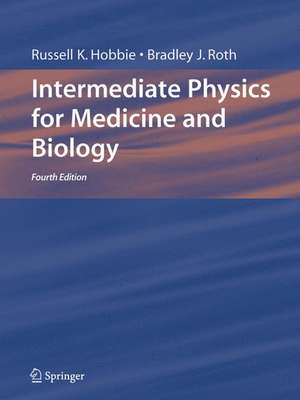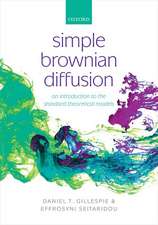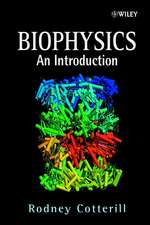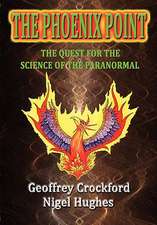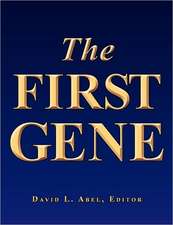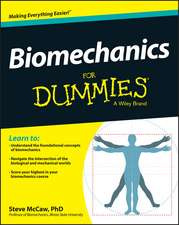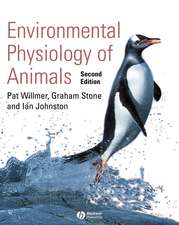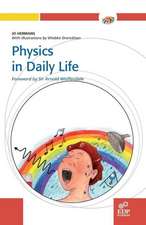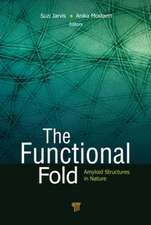Intermediate Physics for Medicine and Biology
Autor Russell K. Hobbie, Bradley J. Rothen Limba Engleză Hardback – 12 mar 2007
Over 800 problems (a 44% increase from the third edition) are included to test the student's understanding and to provide additional biological examples. A solutions manual is available to instructors. Each chapter has an extensive list of references as well as useful bibliographies for further reading. Intermediate Physics for Medicine and Biology is also ideal for self study and as a reference for workers in medical and biological research.
KEY FEATURES:
- Provides an excellent background in physics for physicians, biomedical engineers, and biologists
- Includes a new chapter on sound and ultrasound and presents stochastic processes as an integral part of biological systems
- Emphasizes applications of physics to biomedicine rather than molecular biophysics
- Contains numerous problems and exercises for course use and as a reference for self study
| Toate formatele și edițiile | Preț | Express |
|---|---|---|
| Paperback (2) | 621.57 lei 6-8 săpt. | |
| Springer – 29 oct 2010 | 621.57 lei 6-8 săpt. | |
| Springer International Publishing – 5 mai 2015 | 682.61 lei 6-8 săpt. | |
| Hardback (2) | 652.65 lei 38-44 zile | |
| Springer International Publishing – 5 mai 2015 | 652.65 lei 38-44 zile | |
| Springer – 12 mar 2007 | 689.14 lei 6-8 săpt. |
Preț: 689.14 lei
Preț vechi: 810.75 lei
-15% Nou
Puncte Express: 1034
Preț estimativ în valută:
131.91€ • 143.33$ • 110.87£
131.91€ • 143.33$ • 110.87£
Carte tipărită la comandă
Livrare economică 21 aprilie-05 mai
Preluare comenzi: 021 569.72.76
Specificații
ISBN-13: 9780387309422
ISBN-10: 038730942X
Pagini: 616
Ilustrații: XX, 616 p. 670 illus.
Dimensiuni: 216 x 279 x 34 mm
Greutate: 1.77 kg
Ediția:4th ed. 2007
Editura: Springer
Colecția Springer
Locul publicării:New York, NY, United States
ISBN-10: 038730942X
Pagini: 616
Ilustrații: XX, 616 p. 670 illus.
Dimensiuni: 216 x 279 x 34 mm
Greutate: 1.77 kg
Ediția:4th ed. 2007
Editura: Springer
Colecția Springer
Locul publicării:New York, NY, United States
Public țintă
GraduateCuprins
Mechanics.- Exponential Growth and Decay.- Systems of Many Particles.- Transport in an Infinite Medium.- Transport Through Neutral Membranes.- Impulses in Nerve and Muscle Cells.- The Exterior Potential and the Electrocardiogram.- Biomagnetism.- Electricity and Magnetism at the Cellular Level.- Feedback and Control.- The Method of Least Squares and Signal Analysis.- Images.- Sound and Ultrasound.- Atoms and Light.- Interaction of Photons and Charged Particles with Matter.- Medical Use of X Rays.- Nuclear Physics and Nuclear Medicine.- Magnetic Resonance Imaging.
Recenzii
Aus den Rezensionen zur 4. Auflage:“Es ist eines dieser amerikanischen Großlehrbücher: üppig dimensioniert, didaktisch stark ... Für all diejenigen, die sich wissenschaftlich im Grenzbereich von Physik und Biologie bewegen, ist der großformatige Band ein wahres Geschenk. Die langjährigen Dozenten haben das didaktische Konzept an Generationen von Studierenden erprobt und den Stoff des Bandes immer wieder aktualisiert.“ (www.buchkatalog.de)
Textul de pe ultima copertă
Intended for advanced undergraduate and beginning graduate students in biophysics, physiology, medical physics, cell biology, and biomedical engineering, this wide-ranging text bridges the gap between introductory physics and its application to the life and biomedical sciences. This extensively revised and updated fourth edition reflects new developments at the burgeoning interface between physics and biomedicine. Among the many topics treated are: forces in the skeletal system; fluid flow, with examples from the circulatory system; the logistic equation; scaling; transport of neutral particles by diffusion and by solvent drag; membranes and osmosis; equipartition of energy in statistical mechanics; the chemical potential and free energy; biological magnetic fields; membranes and gated channels in membranes; linear and nonlinear feedback systems; nonlinear phenomena, including biological clocks and chaotic behavior; signal analysis, noise and stochastic resonance detection of weak signals; image formation and description; image reconstruction; hearing and medical ultrasound; atoms and light; near infrared scattering; optical coherence tomography; infrared radiation; ultraviolet light; radiometry and photometry; the interaction of photons and charged particles in tissue; radiological physics and the use of x-rays in diagnosis and therapy; nuclear medicine; and magnetic resonance imaging. Discussion of theory is more closely linked to experiment, and stochastic processes are presented as an integral part of biological systems. A prior course in physics and in calculus is assumed.
Over 800 problems (a 44% increase from the third edition) are included to test the student's understanding and to provide additional biological examples. A solutions manual is available to instructors. Each chapter has an extensive list of references as well as useful bibliographies for further reading. Intermediate Physics for Medicine and Biology is also ideal for self study and as a reference for workers in medical and biological research.
KEY FEATURES:
Over 800 problems (a 44% increase from the third edition) are included to test the student's understanding and to provide additional biological examples. A solutions manual is available to instructors. Each chapter has an extensive list of references as well as useful bibliographies for further reading. Intermediate Physics for Medicine and Biology is also ideal for self study and as a reference for workers in medical and biological research.
KEY FEATURES:
- Provides an excellent background in physics for physicians, biomedical engineers, and biologists
- Includes a new chapter on sound and ultrasound and presents stochastic processes as an integral part of biological systems
- Emphasizes applications of physics to biomedicine rather than molecular biophysics
- Contains numerous problems and exercises for course use and as a reference for self study
Caracteristici
Provides an excellent background in physics for physicians, biomedical engineers, and biologists Includes a new chapter on sound and ultrasound and presents stochastic processes as an integral part of biological systems Emphasizes applications of physics to biomedicine rather than molecular biophysics Contains numerous problems and exercises for course use and as a reference for self study
Notă biografică
Russell K. Hobbie received a B. Physics from MIT and a PhD from Harvard University. He went to the University of Minnesota as a post-doc in 1960 and remained there for 38 years. Originally working in nuclear physics, he became interested in medical issues when he met Richard Reece, MD at a party. The two worked on computer-assisted interpretation of laboratory test results for several years.
Hoping to make the pre-med physics course more interesting, Prof. Hobbie, between 1971 and 1973, audited all the courses medical students take in their first two years at the University of Minnesota. He was amazed by the amount of physics he found in these courses that had seldom been discussed in the general physics course. A number of articles he wrote for the American Journal of Physics presaged the current content recommendations for pre-med and biological physics courses.
Prof. Hobbie also found a great discrepancy between the physics in papers in the biological researchliterature and the level of understanding of most biology majors or pre-med students who have taken a year of physics. It was clear that an intermediate level physics course would help these students. Prof. Hobbie developed such a course in 1973, which led to the publication of Intermediate Physics for Medicine and Biology in 1978.
Prof. Hobbie is a member of the American Physical Society, the American Association of Physicists in Medicine, and the Institute of Electrical and Electronic Engineers. He is a Fellow of the American Association of Physics Teachers.
Bradley J. Roth was born in Clinton, Iowa in 1960, and was raised in Morrison, Illinois. He attended the University of Kansas, majoring in Physics (BS, 1982) and Vanderbilt University (MS, 1985; PhD, 1987). In graduate school, he worked in the Living State Physics Laboratory headed by John Wikswo. In 1988, Prof. Roth joined the Biomedical Engineering and Instrumentation Program at the National Institutes of Health in Bethesda, Maryland.
Prof. Roth's research at NIH centered on three themes: cardiac electrophysiology, magnetic stimulation of nerves, and analysis of the electroencephalogram. From 1995 to 1998, he was the Robert T. Lagemann Assistant Professor of Living State Physics at Vanderbilt. In 1998, he accepted his current position in the Department of Physics at Oakland University.
In 2006, Prof. Roth was elected a Fellow of the American Physical Society (Division of Biological Physics). The citation reads: "For his theoretical and numerical studies of bioelectric and biomagnetic phenomena, especially for his contributions to the bidomain model of the heart."
Hoping to make the pre-med physics course more interesting, Prof. Hobbie, between 1971 and 1973, audited all the courses medical students take in their first two years at the University of Minnesota. He was amazed by the amount of physics he found in these courses that had seldom been discussed in the general physics course. A number of articles he wrote for the American Journal of Physics presaged the current content recommendations for pre-med and biological physics courses.
Prof. Hobbie also found a great discrepancy between the physics in papers in the biological researchliterature and the level of understanding of most biology majors or pre-med students who have taken a year of physics. It was clear that an intermediate level physics course would help these students. Prof. Hobbie developed such a course in 1973, which led to the publication of Intermediate Physics for Medicine and Biology in 1978.
Prof. Hobbie is a member of the American Physical Society, the American Association of Physicists in Medicine, and the Institute of Electrical and Electronic Engineers. He is a Fellow of the American Association of Physics Teachers.
Bradley J. Roth was born in Clinton, Iowa in 1960, and was raised in Morrison, Illinois. He attended the University of Kansas, majoring in Physics (BS, 1982) and Vanderbilt University (MS, 1985; PhD, 1987). In graduate school, he worked in the Living State Physics Laboratory headed by John Wikswo. In 1988, Prof. Roth joined the Biomedical Engineering and Instrumentation Program at the National Institutes of Health in Bethesda, Maryland.
Prof. Roth's research at NIH centered on three themes: cardiac electrophysiology, magnetic stimulation of nerves, and analysis of the electroencephalogram. From 1995 to 1998, he was the Robert T. Lagemann Assistant Professor of Living State Physics at Vanderbilt. In 1998, he accepted his current position in the Department of Physics at Oakland University.
In 2006, Prof. Roth was elected a Fellow of the American Physical Society (Division of Biological Physics). The citation reads: "For his theoretical and numerical studies of bioelectric and biomagnetic phenomena, especially for his contributions to the bidomain model of the heart."
